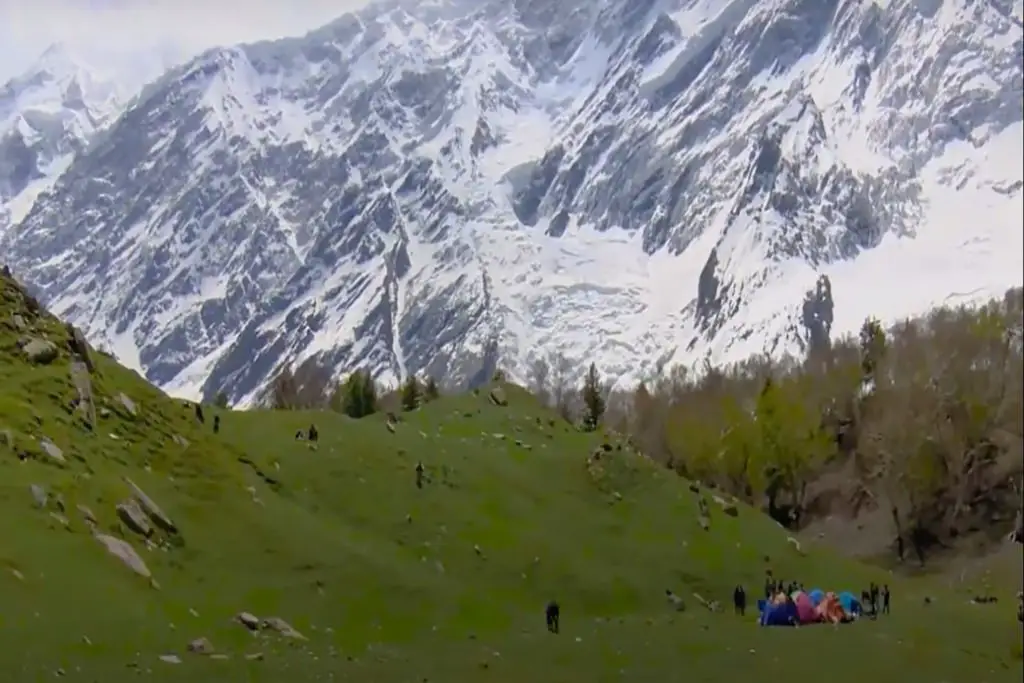Masherbrum, also known as K1, is a mountain located in the Gilgit-Baltistan region of Pakistan. It is the twenty-second highest mountain in the world, with an elevation of 7,821 meters (25,659 feet). The mountain is located in the Karakoram Range and is part of the Masherbrum group, which includes several other peaks over 7,000 meters.
First Summit of Masherbrum
It was first climbed in 1960 by a team of climbers from the United States, New Zealand, and Pakistan. The team was led by Nick Clinch, and the summit was reached by George Bell, Willi Unsoeld, and Tom Frost. The climb was notable for being one of the first successful ascents of a major Karakoram peak by a team of international climbers.
The name is derived from the Balti language, spoken in the region surrounding the mountain. The name translates to “Queen of the Mountains,” and the peak is sometimes referred to as the “Matterhorn of the Karakoram” because of its distinctive shape and steep ridges.
It is a challenging mountain to climb, and it has a reputation for being one of the most difficult peaks in the Karakoram Range. The mountain is characterized by steep, rocky ridges and difficult ice and snow conditions. The climbing season for Masherbrum is typically from June to September, with the best conditions usually in July and August.
Route to Masherbrum
The standard route to the summit of Masherbrum is the southeast ridge, which was the route taken by the first successful climbing team in 1960. The climb involves a long approach through the Hushe Valley, followed by a steep ascent to the base of the ridge. The climbing on the ridge is challenging, with steep sections of rock and ice that require technical skills and experience.
Masherbrum South Face
One of the most notable features of Masherbrum is its south face, which rises over 2,500 meters (8,200 feet) from the valley floor. The south face is one of the largest and most impressive rock walls in the world, and it has been the site of several notable climbing attempts over the years.
In 1975, a team of Italian climbers attempted to climb the south face, but they were forced to retreat after encountering difficult ice conditions. In 1987, a British team led by Chris Bonington attempted to climb the face, but they were also forced to retreat after encountering dangerous snow and ice conditions.
Despite these failed attempts, the south face of Masherbrum continues to attract climbers from around the world. In recent years, several successful ascents have been made, including a new route established by a Russian team in 2015.
Masherbrum is also notable for its role in local culture and folklore. The mountain is considered sacred by the local Balti people, who believe that it is inhabited by a powerful spirit known as the Masherbrum Khalti. According to legend, the spirit protects the mountain and ensures that it remains inaccessible to those who would seek to harm it.
The surrounding region is home to several traditional villages and communities, and visitors to Masherbrum can experience the unique culture and way of life of the local people. The area is known for its rich history and heritage, and there are several ancient fortresses, palaces, and temples that are worth visiting.
In conclusion, Masherbrum is a stunning and challenging mountain that is steeped in history, culture, and folklore. Its distinctive shape, difficult climbing, and rich cultural heritage make it a must-visit destination for anyone interested in mountaineering and adventure travel. Whether you are an experienced climber looking for a new challenge or a cultural traveler seeking to experience the unique







